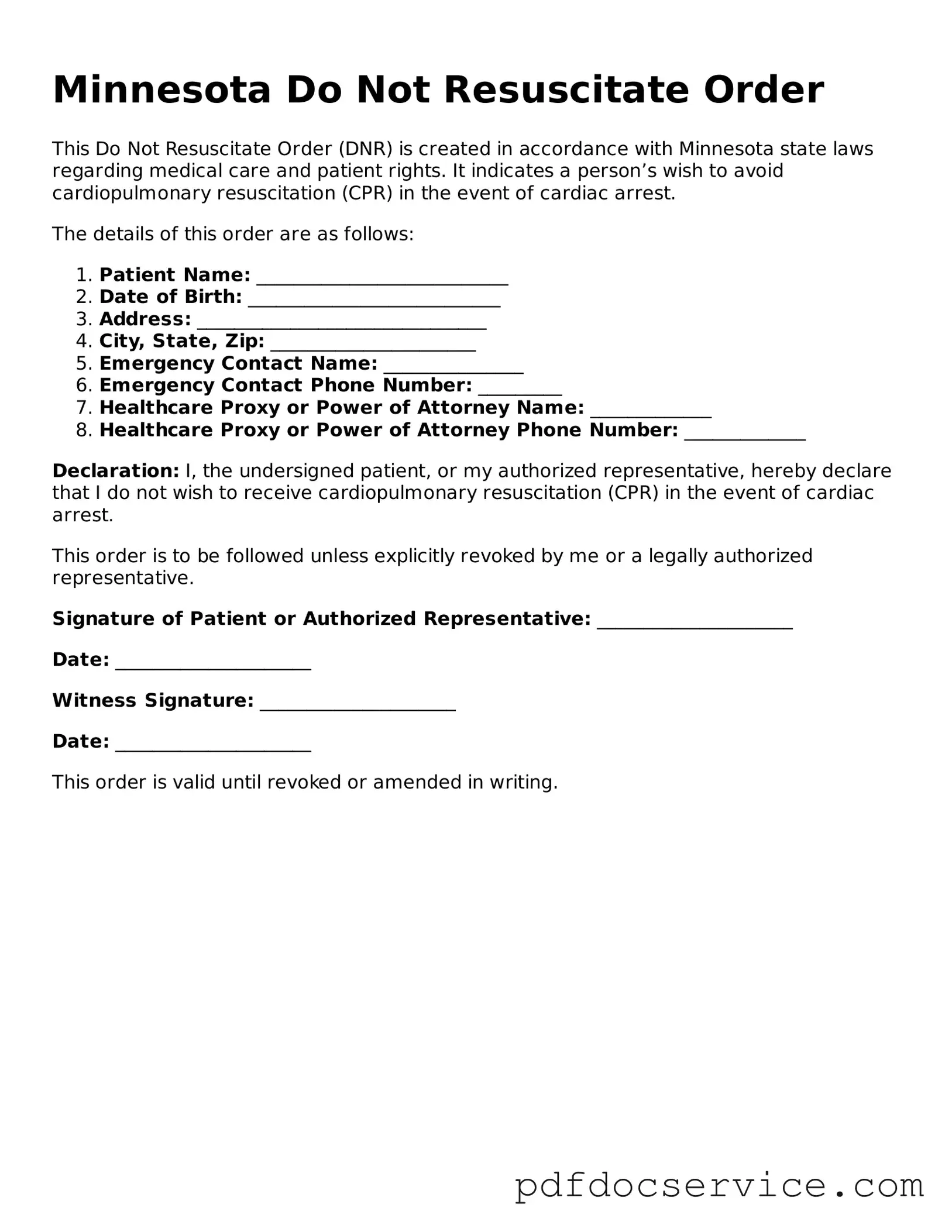What is a Minnesota Do Not Resuscitate Order?
A Minnesota Do Not Resuscitate (DNR) Order is a legal document that allows a person to refuse cardiopulmonary resuscitation (CPR) and other life-saving measures in case their heart stops beating or they stop breathing. This order is typically used for individuals who have a terminal illness or are in a state where they do not wish to undergo aggressive medical interventions.
Who can request a DNR Order in Minnesota?
In Minnesota, a DNR Order can be requested by a patient who is at least 18 years old and has the capacity to make medical decisions. If the patient is unable to make decisions, a legally authorized representative, such as a family member or a healthcare proxy, can request the order on their behalf.
You can obtain a Minnesota DNR Order form from various sources, including:
-
Your healthcare provider or doctor.
-
Hospitals and clinics.
-
The Minnesota Department of Health website.
Once you have the form, it must be filled out and signed by both the patient and a physician to be valid.
The DNR Order form requires specific information, including:
-
The patient's name and date of birth.
-
The name of the physician completing the order.
-
The patient's signature or the signature of their authorized representative.
-
The date the order was signed.
It is important to ensure that all required fields are completed to avoid any issues with the order's validity.
Is a DNR Order valid in all healthcare settings?
Yes, a Minnesota DNR Order is valid in most healthcare settings, including hospitals, nursing homes, and emergency medical services. However, it is essential to inform all healthcare providers about the existence of the DNR Order to ensure that it is honored. Carrying a copy of the order with you can help facilitate this process.
Can a DNR Order be revoked?
Yes, a DNR Order can be revoked at any time by the patient or their authorized representative. To revoke the order, simply inform your healthcare provider and destroy any copies of the DNR Order. It is also advisable to complete a new DNR Order if you wish to establish different preferences for your medical care.
What should I do if I have questions about the DNR Order?
If you have questions about the DNR Order or how it applies to your situation, it is best to discuss your concerns with your healthcare provider. They can provide personalized guidance and help you understand your options. Additionally, legal professionals who specialize in healthcare law can offer insights into the implications of a DNR Order.
